From one single depot in Rochdale in the 1950s, to 170 around the world today, EMR – European Metal Recycling – has managed to keep a ‘family’ company ethos within its activities, while promoting modern working practices across the business, as well as continuing to invest in its infrastructure, equipment and quayside facilities that the business needs for its day-to-day work.
After that first depot in Rochdale, which still exists today, it then established a site in St Helens in 1979. The Group continued its expansion, establishing its first export operation in the Port of Liverpool.
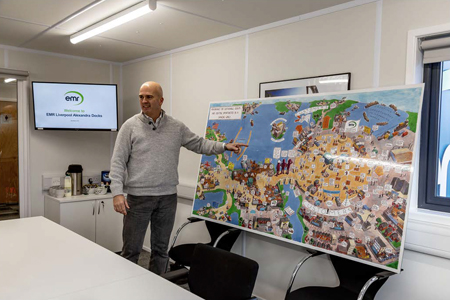
The company has also grown through acquisitions but remains owned by the Sheppard family who changed its name from the Sheppard Group into European Metal Recycling following the merger with Mayer Parry and recognising its ambition to be a European business. The name did later give it a few headaches when it started operations in the US, where it is known as EMR rather than European Metal Recycling.
Andrew Brady, who took over the reigns as UK chief executive in November, is keen to develop for the future, while holding on to the family culture, and this was clear on a winter visit to its Liverpool Alexandra Docks facility in Bootle, Merseyside.
Liverpool operations
Liverpool, one of EMR’s three main ports in the UK, handles over one million tonnes of materials a year, a significant proportion of what the company handles in the UK. It is also home to the UK’s biggest 10,000hp mega shredder, which processes around 400 tonnes of materials an hour.
The company also has two other facilities in Merseyside at the nearby Gladstone Dock as well as a feeder site with a new 1,000 tonne shear at Bankhall near Liverpool City Centre, while the company headquarters is 25 miles away in Warrington.
Last year the business spent over £4 million on upgrades to its Liverpool Alexandra Docks site, including a new office building, welfare facilities and some 1,500 sq m of strong concrete.
At the head of the Mersey, the rail-linked site has two deep sea berths handling average ship payloads of 40,000 tonnes. On entering the working area of the 30-acre site, which has sealed drainage, it’s clear that EMR has fire prevention measures high on the agenda, after having suffered a few fires in 2016 – 2017.
EMR brought in a retired fire chief to aid it in finding the best proactive approach to fires for its port and shedder sites. He made suggestions on fire detection and fire fighting equipment at the sites as well as revised material handling and storage procedures. He also recommended training that could be provided by the fire service for staff so they could initially tackle a fire prior to the arrival of the fire service, and then help out when the fire service arrived.
Mr Brady says that the advent of the lithium battery is probably one of the highest causation factions around fires. “What tends to happen is that when electrical goods are disposed of incorrectly they create a fire risk.
“How do we actually prevent this? A combination of fire prevention plans, training, equipment and tighter procedures on materials has contributed to lowering the fire risks at our sites. We have also installed infra-red technology to look for hot spots before they break out, because if we can actually catch a fire at the earliest possible point, and extinguish it, then it doesn’t become a major issue.”
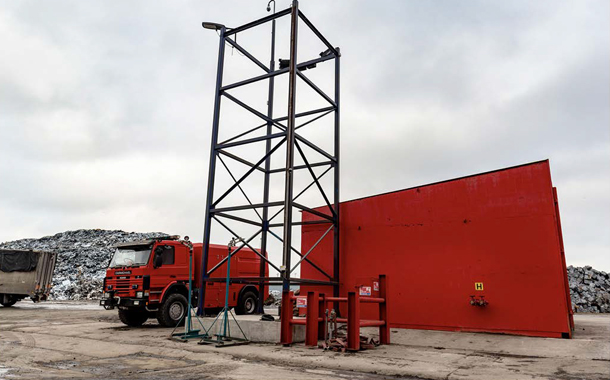
All EMR sites have CCTV systems that are all monitored by security firms. The introduction of the infra-red technology should provide earlier warning to the company and fire brigade.
“In the unfortunate event of a fire, we have installed a water extraction pump, with a 5,000 litres per minute capacity, two EMR fire engines which hold 6,000 litres of water and a 50,000 litre storage tanks. We have also developed fire prevention plans, and trained our staff to fight the fire whilst the fire brigade are called. We also use foam in the shredder which depletes oxygen levels during the shredder process and we also process scrap faster to lower the fire risk.”
Since developing the site, EMR has held its first ever open day, has been working closely with the council, mayor and MPs, developed a schools engagement programme, built partnerships with local community groups, including an inclusive football team Mr and currently works closely with charities giving people who have fallen on tough times interviews and job opportunities. They have also built a partnership with Merseyside Fire and Rescue Service, which uses its site to practice cutting people out of scrap cars as part of its road traffic collision (RTC) training. Developing relationships with local fire services is encouraged at all depots.
The ‘Big Picture’
While there has recently been significant capital investment at its Liverpool Alexandra Docks facility, there has also been investment of a different kind inside the business to help communicate the company vision to all employees, in the form of a large pictorial, the ‘Big Picture’.
The ‘Big Picture’ portrays a clear, yet detailed image of the past, the present and the future of EMR. “There is the challenge of how we take the best of who we are and what we do and then questions what do we change or leave behind and then what do we need to add or learn?
“EMR is a family run business, with strong family values which is evident across the business.” Mr Brady describes the company as having “the scale, operations and systems of a plc” combined with “the values of a family business.”
“The ‘Big Picture’ serves as a constant reminder of where we have come from, where we were a couple of years ago and where we want to go to. It can be seen in all our offices and canteens. The Picture epitomises the company ethos,” explains Mr Brady who has been at EMR for over eight years.
Mr Brady says the focus is on making EMR even more customer focused, more service orientated, community and people focused, as well as identifying where the opportunities are to be found.
Community-focused
Featured prominently on the ‘Big Picture’ is EMR’s commitment to support the community.
Mr Brady explains: “At EMR, we recognise the importance of supporting communities close to our sites. We have been working hard to learn more about our neighbours and communities, building relationships with local councils, MPs and fire services, and supporting charities and community groups who make a difference at the heart of the communities we serve.
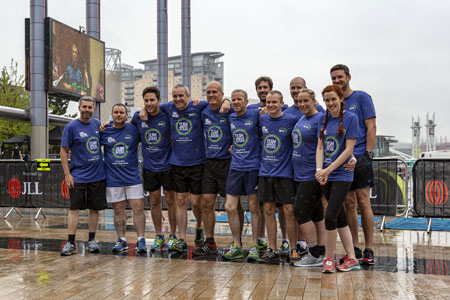
“As one of the UK’s leading metal and plastic recyclers, we strongly believe that one of our key roles is to promote the need for all metal to be recycled. In response, we want the general public to be aware of the important role metal recycling companies have in preserving natural resources and have developed a schools engagement programme which is being rolled out across the UK. We recycle around 10 million tonnes of metal each year, which saves around 10 million tonnes of CO2 compared to using virgin ores.”
UK operations
In the UK, EMR has more than 70 sites with around 1,600 employees. The business says it “recycles everything from a toaster to an aircraft carrier”. EMR has three deep sea ports at Liverpool Alexandra Docks, Port of Tilbury and Tyne Dock at South Shields, from where materials can be exported to Europe, Egypt, Turkey, China and India. It also has a plethora of other ports across the UK.
EMR’s UK sites range from smaller feeder sites, which take in metal waste from the general public to large construction industries. They have processing sites that have equipment such as shears, balers and shredders that cut, densify and separate materials. EMR also has two refrigeration plants in Birmingham and Willesden.
It has more than 4,000 employees across the world with vast metal recycling expertise. The business has specialist divisions, including an in-house consultancy, Mayer Environmental and its Shipbreaking facility in Brownsville (USA), which has dismantled three 65,000t aircraft carriers and has recently finished the dismantling of the USS Independence (CV-62).
Future-looking
EMR’s R&D division is constantly looking at innovation, new markets and in particular, finding optimal ways to run its separation plants within the shredder facilities.
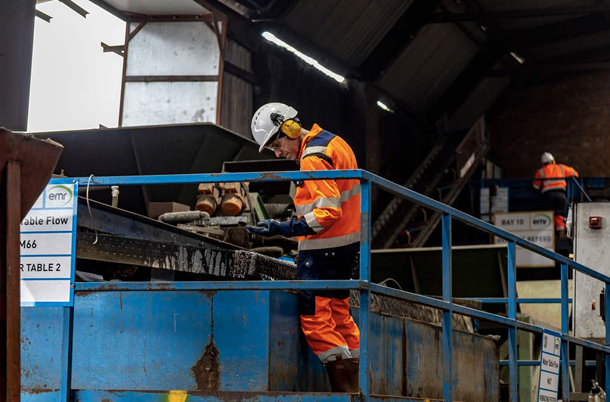
Whilst the core business for EMR is metal recycling, it has diversified into plastics with a plastics plant, initially a joint venture with MBA Polymers, fully taken over by EMR in December 2017.
“Our objective is to take the durable consumer goods that people throw away and reuse, recycle and recover 100% of them. The focus on the environmental impact of plastics by the government is extremely timely and welcomed. We look forward to play our part in the solution,” says Mr Brady
EMR was recently announced as a Waste to Wealth Champion at the Business in the Community Waste to Wealth Summit in London attended by HRH The Prince of Wales.
Mr Brady says: “It was inspiring to see 200 leaders from business, government, and academia come together at the Waste to Wealth Summit, recognising the scale of the environmental challenge facing us, but also how this can be a huge opportunity for all.
“Recycling and the circular economy can have huge positive impacts on the environment. If companies design products correctly, we can minimise the carbon footprint over their lifecycle and recycle them back into new products efficiently.
“We would like to work with all industries and collaborate on making the circular economy work for them. We aim to demonstrate the impact of product design on recycling in the real world and make sure that everyone can maximise the value they are getting from their waste streams.”





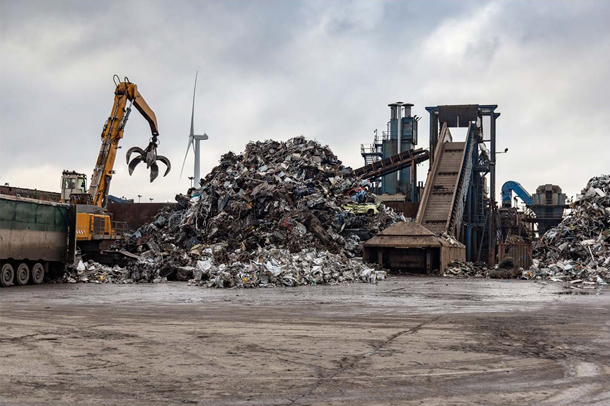

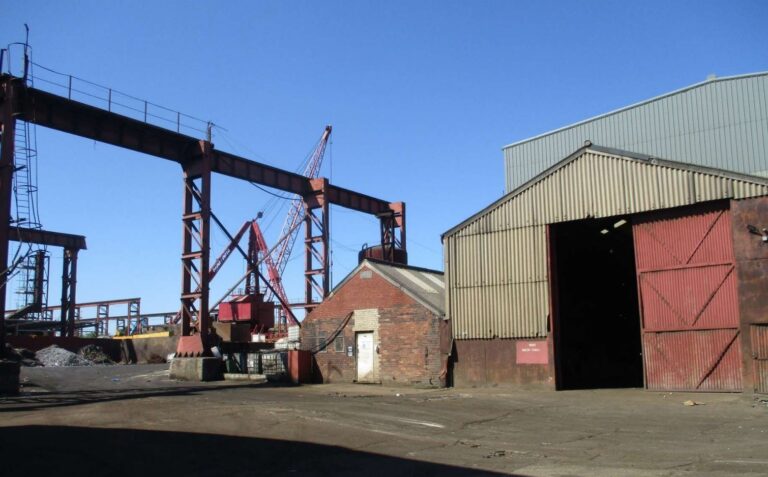
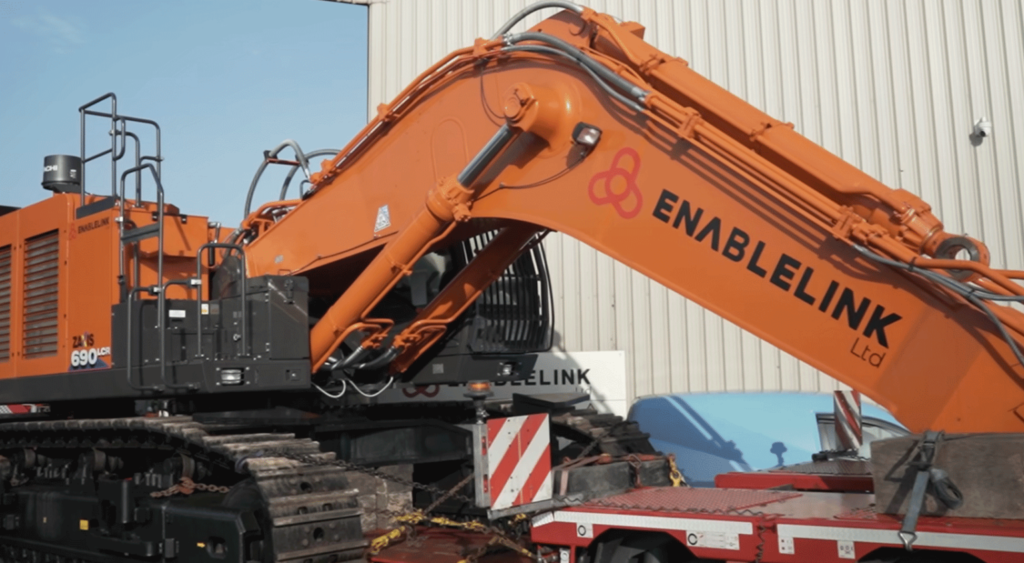



Subscribe for free